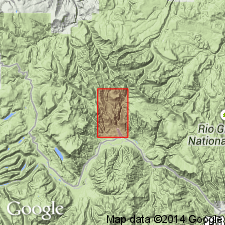
- Usage in publication:
-
- Rat Creek quartz latite*
- Modifications:
-
- Original reference
- Dominant lithology:
-
- Quartz latite
- AAPG geologic province:
-
- San Juan Mountains province
Summary:
Rat Creek quartz latite of Piedra group of Potosi volcanic series. A series of lava flows with some interbedded tuff, the flows and the tuff consisting of quartz latites of very similar character; differ but little from underlying quartz latite tuff and overlying Nelson Mountain quartz latite. Thickness 0 to 500 feet. A subdivision of Piedra group of Potosi volcanic series. Age is Miocene.
Named from development on Rat Creek, [in T. 42 N., R. 1 W., San Luis Peak 7.5-min quadrangle, Mineral Co.], Creede district, southwestern CO.
Source: US geologic names lexicon (USGS Bull. 896, p. 1775).
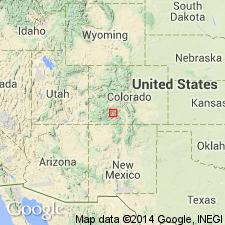
- Usage in publication:
-
- Rat Creek Quartz Latite*
- Modifications:
-
- Revised
- AAPG geologic province:
-
- San Juan Mountains province
- San Luis basin
Summary:
Redefined as a widespread sequence of welded and nonwelded ash-flow tuffs. Both base and top of formation show evidence of erosion, but no erosional break seen within the formation. As originally defined name Rat Creek applied only to upper part of sequence (Emmons and Larsen, 1923). Found only in high mountains extending east from Spring Creek Pass, 13 mi northwest of Creede, San Juan Mountain province, through Nelson Mountain area north of Creede to the La Garita Mountains northeast of Creede, San Luis basin. Consists largely of soft pyroclastic rocks. Is 600 to 800 ft thick over wide areas. Ranges from 0 to 1,000 ft thick. Is of middle and late Tertiary age, younger than Wason Park Rhyolite or Huerto Formation and older than Nelson Mountain Quartz Latite.
Source: GNU records (USGS DDS-6; Denver GNULEX).
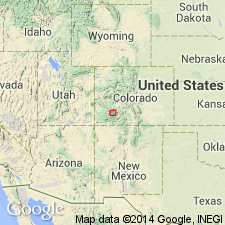
- Usage in publication:
-
- Rat Creek Tuff*
- Modifications:
-
- Geochronologic dating
- AAPG geologic province:
-
- San Juan Mountains province
Summary:
Is a greater than 26.4 m.y. (K-Ar) or late Oligocene crystal-rich quartz latite from the San Luis caldera. Has normal magnetic polarity. Had an estimated initial volume of 700-800 cubic km.
Source: GNU records (USGS DDS-6; Denver GNULEX).
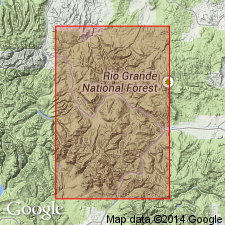
- Usage in publication:
-
- Rat Creek Tuff*
- Modifications:
-
- Revised
- AAPG geologic province:
-
- San Juan Mountains province
Summary:
Pg. A38-A39, A80. Rat Creek Tuff. Includes (ascending) unnamed outflow member and Equity Member. Age is late Oligocene. The Rat Creek and Nelson Mountain Tuffs are lithologically similar, compositionally zoned ash-flow sheets derived in close succession from nearby calderas (San Luis caldera and Cochetopa Park caldera, respectively). Rocks of equivalent composition in each formation, particularly the quartz latitic rocks, are so similar that they cannot easily be distinguished, whereas rocks of contrasting composition within either formation vary widely in appearance. As a result, during local detailed studies in the Creede mining district, Steven and Ratte (1964, USGS Prof. Paper 475-D, p. D60-D61; 1965, USGS Prof. Paper 487, p. 37) mistakenly correlated intracaldera quartz latitic Rat Creek Tuff in the core of the San Luis caldera with virtually identical Nelson Mountain Tuff across a fault. The correct interpretation became apparent only after broad regional studies provided the proper geologic context. The Nelson Mountain Tuff was erupted from the Cochetopa Park caldera shortly after the Rat Creek Tuff was erupted from the San Luis caldera, and the two caldera cycles overlapped in time. Steven and Ratte (1964, p. D61; 1965, p. 37) abandoned the Equity Quartz Latite, considering it to be same as Nelson Mountain Tuff. Subsequent mapping has shown the Equity as defined by Emmons and Larsen (1923) is completely equivalent to the densely welded, crystal-rich, quartz latite intracaldera member of the Rat Creek Tuff, which accumulated within the subsiding core of the San Luis caldera concurrently with eruption. Thus, unit is reinstated as the Equity Member, upper member of the Rat Creek Tuff.
Source: Publication.
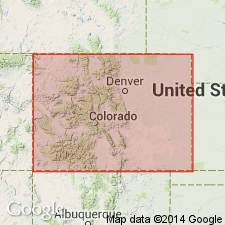
- Usage in publication:
-
- Rat Creek Tuff*
- Modifications:
-
- Revised
- AAPG geologic province:
-
- San Juan Mountains province
Summary:
Rat Creek Tuff. Traces history of confusion of use of Rat Creek, Nelson Mountain, and Cochetopa Park Tuffs. Authors believe original correlation of Nelson Mountain Tuff with the Equity Member in the San Luis caldera is correct. It is therefore removed from Rat Creek Tuff and reassigned to Nelson Mountain Tuff. Rat Creek Tuff is recognized in the Creede area, Mineral County, Colorado (San Juan Mountain province). Is dominantly of rhyolite composition. Related to the early stage of the San Luis caldera. Had an estimated volume of less than 100 cubic km. Is about the same age as the Wason Park Tuff; underlies Nelson Mountain Tuff. Age is greater than 26.4 m.y. and less than 26.7 m.y.
Source: Modified from GNU records (USGS DDS-6; Denver GNULEX).
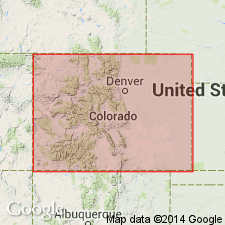
- Usage in publication:
-
- Rat Creek Tuff*
- Modifications:
-
- Geochronologic dating
- AAPG geologic province:
-
- San Juan Mountains province
Summary:
Rat Creek Tuff. Is ash-flow sheet questionably associated with San Luis caldera in central San Juan Mountains of southwestern Colorado. High-resolution 40/39 Ar geochronology (unpublished data, M. Lanphere, USGS) yielded age of 26.0 Ma [late Oligocene].
Source: Modified from GNU records (USGS DDS-6; Denver GNULEX).
For more information, please contact Nancy Stamm, Geologic Names Committee Secretary.
Asterisk (*) indicates published by U.S. Geological Survey authors.
"No current usage" (†) implies that a name has been abandoned or has fallen into disuse. Former usage and, if known, replacement name given in parentheses ( ).
Slash (/) indicates name conflicts with nomenclatural guidelines (CSN, 1933; ACSN, 1961, 1970; NACSN, 1983, 2005, 2021). May be explained within brackets ([ ]).

